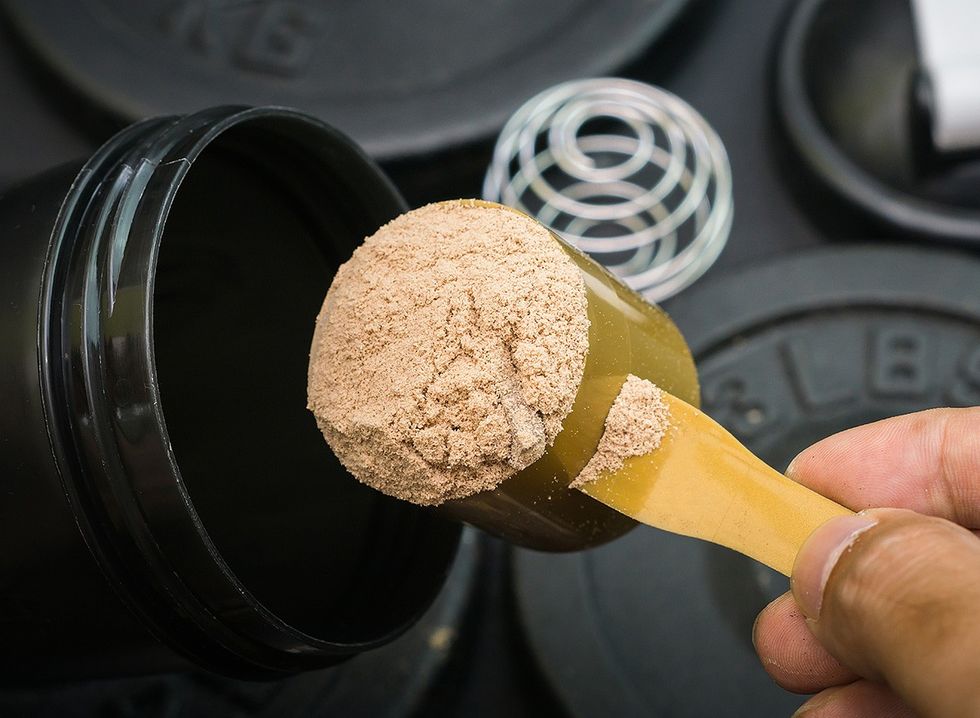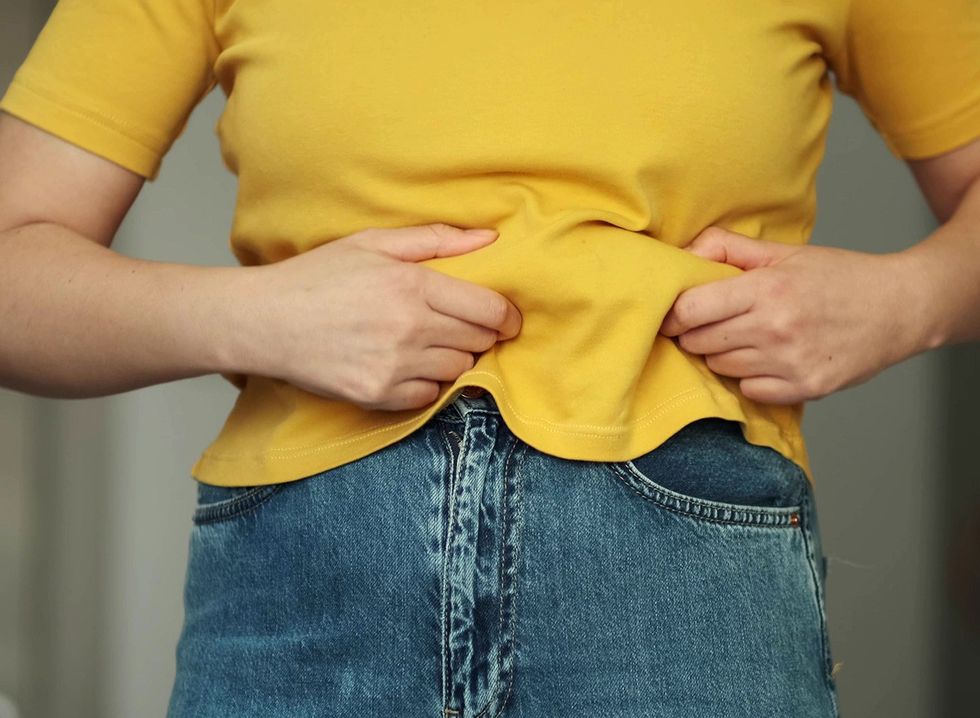When it comes to weight loss, a healthy diet is crucial for success—and that means healthy snacks, too. Choosing high-protein options will encourage fat loss and give you energy. “It is important for individuals to consume protein every day,” chef and dietitian Nancy Waldeck tells Piedmont Health. “Daily protein intake plays a role in keeping your cells in good shape and should be part of your daily health maintenance plan.” Here are seven great high-protein snacks to support weight loss.
Edamame

Edamame is a great choice for a healthy high-protein snack on the go. “Soybeans contain all of the essential amino acids necessary for human nutrition and have been grown and harvested for thousands of years,” Aaron J. Michelfelder, MD, tells American Family Physician. “Populations with diets high in soy protein and low in animal protein have lower risks of prostate and breast cancers than other populations.”
Boiled Eggs

Whole eggs contain protein and good fats. "The protein found in eggs — both whole eggs and egg whites — is really high quality protein, containing all of the essential amino acids we need," dietician Kylie Arrindell tells Houston Methodist. "About 40% of this protein is found in the egg yolk, and the other 60% is in the egg whites."
Yogurt

Yogurt contains healthy fats and protein. “Greek-style yogurt contains less water than regular varieties,” Dana Angelo White, M.S., R.D., A.T.C. tells Food Network. “This creates yogurt with a tangier flavor and thicker consistency; this also affects the nutrition facts. One cup of non-fat plain Greek yogurt has 80 calories and 13 grams of protein.”
RELATED: 15 Quick Ways to Lose Body Fat Percentage in a Week
Nut Butter

Nut butters are loaded with protein and fiber, making them a great choice for a filling yet healthy snack. "Nut butters contain a mix of nutrients including fiber, protein, B vitamins, phosphorus, zinc, and vitamin E," says registered dietitian Andrea Hasson from Cedars-Sinai Nutrition Counseling Services. Peanut butter has the highest protein.
Cottage Cheese

Cottage cheese is high in protein and calcium, making it a very healthy snack. “In a half-cup serving of cottage cheese, there are approximately 14 grams of protein,” Alison Graziano, RDN, LDN, tells Massachusetts General Hospital. “Making it an excellent choice for individuals looking to increase their protein intake.”
Canned Tuna

Canned tuna is loaded with protein and full of nutrients such as iron and omega-3 fatty acids. “Your body can’t produce the amount of omega-3s you need to survive,” says the Cleveland Clinic. “So, omega-3 fatty acids are essential nutrients, meaning you need to get them from the foods you eat.”
RELATED: I Transformed My Body From Flabby to Firm and Here Are My 3 Secrets
Cheese

Cheese is high-protein and promotes satiety. It’s also an easy option to keep on hand for snacking on the go (for example, individually wrapped string cheese). Cheese also contains calcium and selenium.
💪🔥Body Booster: Always keep a healthy snack on hand to avoid poor food choices.
















 Shutterstock
Shutterstock Shutterstock
Shutterstock Shutterstock
Shutterstock Shutterstock
Shutterstock Shutterstock
Shutterstock Shutterstock
Shutterstock Shutterstock
Shutterstock Shutterstock
Shutterstock Shutterstock
Shutterstock Shutterstock
Shutterstock Shutterstock
Shutterstock Shutterstock
Shutterstock Shutterstock
Shutterstock Shutterstock
Shutterstock Shutterstock
Shutterstock

 Shutterstock
Shutterstock Shutterstock
Shutterstock simplyhealthyrd/TikTok
simplyhealthyrd/TikTok Shutterstock
Shutterstock Shutterstock
Shutterstock Shutterstock
Shutterstock Shutterstock
Shutterstock


 I'm a Nutritionist and These 9 High-Protein Snacks Keep My Clients Full While Losing 50 Pounds
I'm a Nutritionist and These 9 High-Protein Snacks Keep My Clients Full While Losing 50 Pounds
 Shutterstock
Shutterstock 2. Processed FoodsShutterstock
2. Processed FoodsShutterstock Shutterstock
Shutterstock Shutterstock/Prostock-studio
Shutterstock/Prostock-studio Shutterstock
Shutterstock Pro TipsShutterstock
Pro TipsShutterstock Shutterstock
Shutterstock Shutterstock
Shutterstock Shutterstock
Shutterstock Shutterstock
Shutterstock Don’t Drink as Much AlcoholShutterstock
Don’t Drink as Much AlcoholShutterstock Most Women on GLP-1s Are Making a Few Common MistakesShutterstock
Most Women on GLP-1s Are Making a Few Common MistakesShutterstock Soda and Sugary DrinksShutterstock
Soda and Sugary DrinksShutterstock Shutterstock
Shutterstock Eat BreakfastShutterstock
Eat BreakfastShutterstock And Improve Insulin SensitivityShutterstock
And Improve Insulin SensitivityShutterstock Belly Flab Strip Tip: Sugar and Fat Calories Leave Its Mark on Your BodyShutterstock
Belly Flab Strip Tip: Sugar and Fat Calories Leave Its Mark on Your BodyShutterstock Shutterstock
Shutterstock The Drugs Mimic the GLP-1 Hormone Naturally Produced by the BodyShutterstock
The Drugs Mimic the GLP-1 Hormone Naturally Produced by the BodyShutterstock 3. Deep-Fried ItemsShutterstock
3. Deep-Fried ItemsShutterstock